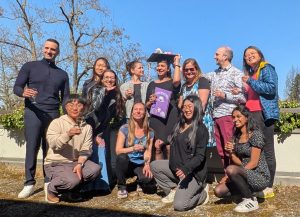Our study „A single gene orchestrates androgen variation underlying male mating morphs in ruffs“ made in on the cover of Science!
Ruffs – a shore bird species – come in three different morphs that differ in appearance and behavior. “Independents,” have darker plumage and aggressively defend a small territory in mating arenas, “satellites” have lighter-colored plumage and court peacefully, while “faeder” morphs a hard to distinguish from female ruffs, allowing them to sneak into the mating arenas unnoticed. Using a combination of transcriptomics and molecular biology methods, we showed that an enzyme, which is encoded by a gene in a recently inverted genomic region, is responsible for regulating testosterone levels, underlying the differences in phenotype and mating of the morphs.
Our team was led by Clemens Küpper (Max Planck Institute for Biological Intelligence) with exceptional contributions from Alex Zemella, Jasmine Loveland and Vladimir Jovanovic. More information can be found in our press releases in German and English.



